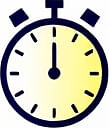Using the Eisenhower Matrix for Daily Productivity
 by Verner Mayer
by Verner Mayer
Discover how the Eisenhower Matrix helps sort tasks by importance and urgency, making it easier for professionals and students to manage time effectively and achieve more each day. Learn practical steps to integrate it into your routine for lasting results.

The Eisenhower Matrix offers a straightforward way to organize tasks and boost productivity in everyday life. This method divides tasks into categories based on their urgency and importance, helping individuals focus on what truly matters.
What is the Eisenhower Matrix?
The Eisenhower Matrix stems from a simple idea: not all tasks deserve equal attention. It creates a grid with four quadrants to classify activities. In one quadrant, you place tasks that are both urgent and important. These demand immediate action and often relate to deadlines or crises.
The second quadrant includes tasks that are important but not urgent. These involve long-term goals, like skill development or planning ahead. The third quadrant covers tasks that are urgent but not important, such as minor interruptions or requests from others. Finally, the fourth quadrant holds tasks that are neither urgent nor important, which might include distractions or low-value activities.
By using this grid, people can prioritize effectively and reduce overwhelm. For instance, a student might identify studying for an exam as urgent and important, while scheduling exercise fits into important but not urgent.
Applying the Matrix in Daily Routines
To make the Eisenhower Matrix part of your day, start by listing out all tasks at the beginning of the morning. Then, sort them into the four quadrants. This process takes only a few minutes but can transform how you approach your schedule.
For busy professionals, this means tackling high-priority items first. If a work project has a tight deadline, it goes straight into the urgent and important category. Once completed, shift focus to important but not urgent tasks, such as networking or professional growth.
Students can benefit by using the matrix to balance academics and personal life. For example, preparing for a presentation might be urgent and important, while reading for pleasure could wait. The key is to eliminate or delegate items in the lower quadrants, freeing up time for what counts.
Benefits of Daily Use
Incorporating the Eisenhower Matrix into routines leads to better focus and less stress. It encourages a proactive mindset, where individuals plan ahead rather than react to pressures. Over time, this builds habits that support consistent progress.
One advantage is improved decision-making. By evaluating tasks through the lens of urgency and importance, you avoid wasting energy on trivial matters. Another benefit involves enhanced productivity, as the matrix helps maintain momentum on key goals.
For professionals juggling meetings and emails, the matrix clarifies what to address immediately. Students facing assignments and social commitments find it easier to stay on track without feeling scattered.
Practical Tips for Implementation
Begin with a simple tool like a notebook or app to draw the grid. Review your list daily and adjust as needed. Aim to spend most of your time in the important quadrants to foster growth.
If a task seems urgent but not important, consider delegating it. For items that are neither, simply remove them from your list to keep things clear.
- Use a timer to work on important tasks without distractions.
- Review your matrix weekly to track patterns and improvements.
- Combine it with other strategies, like setting daily goals, for even better results.
Through regular practice, the Eisenhower Matrix becomes second nature, leading to more efficient days and a sense of accomplishment.
Real-Life Examples
Consider a professional starting their day. They might categorize answering emails as urgent but not important, while strategizing for a client project is both urgent and important. By handling the project first, they maintain progress on critical work.
A student could apply this during exam season. Urgency might push them to complete homework quickly, but focusing on important study sessions ensures deeper learning. This balance prevents last-minute rushes and promotes steady achievement.
In family life, planning meals might be important but not urgent, allowing time for quality interactions. The matrix helps integrate these aspects, creating a more harmonious daily flow.
Staying Motivated with the Matrix
To keep using the Eisenhower Matrix, celebrate small wins. Completing a quadrant of tasks can provide a boost, reinforcing the value of this approach. Remember, consistent application leads to noticeable changes in productivity and well-being.
By making the matrix a habit, you create space for personal development and enjoyment. This method supports a fulfilling life, where time is used wisely and effectively.
